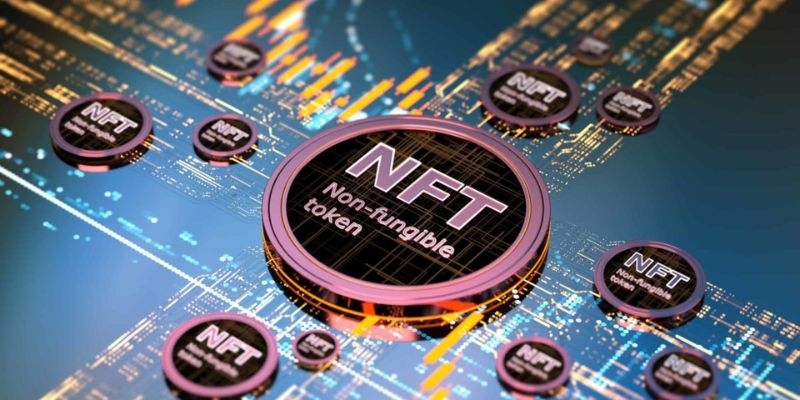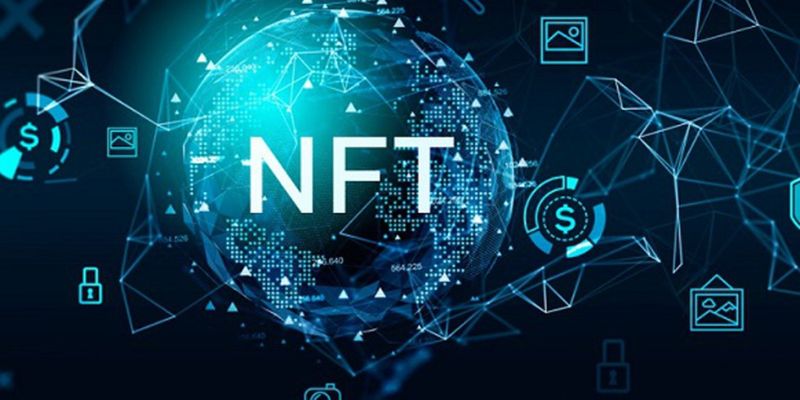Imagine finding a one-of-a-kind digital gem, a piece no one else can claim but you. That’s where we dive into What is a non-fungible token (NFT)? Minds worldwide buzz with curiosity about these digital treasures. They’re unique items on the web; you can own, sell, or collect them like rare baseball cards. Shaking up the digital scene, NFTs redefine what it means to “own” art, memes, and even tweets. I’ll break it down for you – no jargon, just the juicy bits you need to understand this bold new world. Let’s peel back the layers of the NFT mystery together.
Demystifying Non-Fungible Tokens: An Overview
Understanding the Non-Fungible Definition
Let’s dig into what makes a token non-fungible. Think of it as a one-of-a-kind trading card. It’s not like a dollar bill that you swap for another just like it. It’s special, unique. It can’t be swapped out because there’s nothing else the same to swap with. That’s the non-fungible part—no two NFTs are the same.
So, when you hear “non-fungible definition,” picture that rare collectible you can’t simply exchange. It’s got a special quality, a magic that sets it apart. With NFTs, that magic lives in the digital world and it’s recorded on a blockchain. That’s how everyone knows it’s yours and only yours.
How NFT Technology Transforms Digital Ownership
Now, let’s talk about how NFT technology flips digital ownership on its head. It used to be that if you bought a digital image, anyone could copy it. It was like that art you had didn’t just belong to you. But with crypto tokens and blockchain, buying a digital piece of art—like crypto art—means you get a special digital token showing you own the original.
Buying and selling NFTs isn’t like anything else. When you buy an NFT, what you’re really getting is a digital token—sort of like a proof of ownership. But not just any token, one that’s part of the blockchain. This is big because it shows everyone that you, and only you, own the digital collectible.
Blockchain and NFTs go hand in hand. Think of the blockchain as a fancy ledger that says who owns what NFT. It can be on many blockchains, but Ethereum and NFTs are like peanut butter and jelly—they work super well together. Ethereum is a place where lots of digital collectibles live.
Minting NFTs is like making a new trading card. Someone creates it, then it gets added to this ledger, and bam—the NFT is born. This minting shows off the thing’s rarity and uniqueness. This is cool because it means your digital asset isn’t just a file. It’s a piece of art with a value tied to it, kind of like a painting in a gallery.
And the best part? The creators and NFTs have a neat link. When an artist mints a tokenized piece of art, they can get royalties every time it gets sold again. This is a game-changer for folks making digital art or other virtual goods. Now, the art studio stretches far and wide, and artists can keep earning from their work.
The NFT marketplaces are where people buy and sell NFTs. They’re like online stores where each NFT, be it digital collectible, gaming item, or piece of crypto art, finds a home. With digital scarcity and programmable art, the possibilities are vast. It’s not just about a picture on a screen—it’s about owning a piece of the digital frontier.
This magic of NFTs is reshaping our whole idea of what we can collect, own, and how we show off the cool stuff we have. From pixelated punks to virtual lands, owning an NFT is your ticket into the new digital collectible space. Welcome to the future of digital ownership, where every NFT is a door to something original and exciting. Now, isn’t that something worth exploring?
The Foundations of NFTs: Blockchain and Ethereum
Exploring the Relationship Between Blockchain and NFT
Ever wonder how NFTs work? At their heart is blockchain. Think of it like a digital ledger. This ledger isn’t held in one place; it’s spread across many computers. It records NFT ownership and transfers, so it’s super safe from fakes or hacks. Each NFT is a crypto token. But unlike regular money, you can’t swap one for another like for like. Each NFT is unique, like a snowflake.
When you buy NFTs, they’re yours through a smart contract. A smart contract is a set of computer code. It manages the NFT’s property rights. You want to show the world your digital collectible? The blockchain’s got your back. It proves you’re the true owner.
The Role of Ethereum and NFTs in Today’s Digital Economy
Now let’s chat about Ethereum. It’s a major player in the NFT game. Ethereum is not just digital money; it’s like a giant computer. Many NFTs call it home. Why? Well, Ethereum lets developers write their own rules for NFTs. That’s thanks to those smart contracts we talked about. This freedom means we can do cool things like make NFTs for art, gaming, or even virtual real estate.
The NFT marketplaces are like online shops. They let us buy and sell NFTs. To do this, you need Ethereum’s cryptocurrency, called Ether. Buying art gets easier. Even if you’re nowhere near the gallery. Ethereum and NFTs are changing how we think about owning things digitally.
Creators love Ethereum for NFTs. They can sell their work worldwide and also get paid when it’s sold again. That’s because of the royalties set in smart contracts. Everyone talks about rarity and uniqueness in NFTs. Ethereum makes sure all of that is logged and legit.
Tokenizing assets like art means turning them into NFTs. With Ethereum, an artist can take their paintings and make digital versions that collectors can buy. It’s a mix of the art world and tech—a place full of potential for creators and buyers alike.
So, what are digital collectibles? They’re stuff like art, cards, or even tweets, turned into NFTs. You can collect, share, or trade them without the worry of fakes. And crypto art? It’s artwork that’s been tokenized on the blockchain. Picture buying a painting, but instead of hanging it on your wall, it’s in your digital wallet.
Think about gaming NFTs and virtual goods, too. In games, you can now own items like costumes or weapons as NFTs. They’re yours in the game world, proven by blockchain. This is big news for gamers!
Lastly, we have metadata in NFTs and IPFS—a fancy way to store info off the main blockchain. It means your NFT can carry a bunch of extra details, like who made it, without clogging up the blockchain.
In summary, blockchain and Ethereum create a trusty space for NFTs. They help us prove ownership, trade, and celebrate the things we love, digitally. It’s a new economy, all thanks to this cool tech!
Navigating the NFT Marketplace
The Mechanics of Buying and Selling NFTs
Let’s dive into how one buys and sells NFTs. First, you need a digital wallet and some cryptocurrency, usually Ethereum. Why Ethereum? It’s the network where most NFTs live. To grab an NFT, you go to an NFT marketplace. Think of it like an online art sale but for digital items.
On these platforms, you can browse, bid on, and buy NFTs with your crypto. Once you buy an NFT, it’s yours. You own it, much like how you would own a rare baseball card. But instead of keeping it in a binder, your NFT is stored on the blockchain. What’s blockchain? It’s a secure online ledger everyone can see but no one can mess with.
Selling is much like buying but in reverse. You put up your NFT for sale, maybe set a price or let others bid, and wait for a buyer. If someone buys it, that NFT moves out of your wallet into theirs and you get cryptocurrency in return.
Evaluating Digital Collectibles: Rarity, Uniqueness, and Value
Wondering how to tell if an NFT is a treasure or just another digital image? Look at its rarity, uniqueness, and value. Rarity means how rare or common an NFT is. The rarer, the better, just like a one-of-a-kind comic book. Uniqueness is about what makes an NFT special. It could be the artist, the art itself, or a special feature no other NFT has.
Then there’s value. This is tricky since it’s not just about money. It’s also about what it means to you and what others might pay for it. Some people collect NFTs they think will be worth loads later. Others collect because they love the art or what the NFT stands for.
So, when you look at an NFT, ask: Is it rare? Is it one-of-a-kind? And do others see its worth? If yes, you might have a winner. Plus, you can show off your NFT to friends or on social media. And if the time comes, you could sell it, hopefully for more than what you paid. If you made a smart pick, your digital treasure could bring real cash your way.
As you get to know the world of NFTs, you’ll learn more about what they offer. There’s a lot to explore, from artwork to music to virtual worlds. The key is to find what you love, do your research, and maybe even make a smart investment. Always remember, the world of NFTs changes fast. Keep up and enjoy the ride!
The Future of Digital Assets and Creators’ Rights
The Intersection of NFT Investments and Tokenized Art
Imagine you draw a picture. Not just any picture, but a digital one. You want to sell it online, but how can you make sure only one person can own it? Here comes a cool thing called a “NFT”. An NFT is like a special sign that says, “This digital picture is unique and only one person can own this special version.” This way, when you sell your picture, the buyer really feels like they have something rare, something that’s just theirs. This is a big deal for artists. Now they can make money from their art on the internet, just like they would sell a painting in a gallery.
NFTs are not just for pictures. People use them for videos, music, and even tweets. They’re different from normal money or “cryptocurrency” because each NFT is one-of-a-kind. It’s like each NFT is a magic snowflake, no two are the same. This makes them perfect for art. You see, when artists make tokenized art, they’re turning their art into a snowflake that can be traded. This lets them keep making money if the art is sold again.
Understanding Smart Contracts, Royalties, and Legal Implications
Now, when you make an NFT, you use something called a smart contract. This is like a robot that follows rules. The artist says, “Every time my picture is sold, I get some money.” The smart contract makes sure this happens. It’s a promise that can’t be broken. This is great for artists because they keep earning money, even after their art finds a new home.
But there’s more to it. Buying and selling NFTs is serious business. There are laws that help make sure everything is fair and square. This means if you buy an NFT, it’s really yours. No one can just take it or copy it. This helps both the artist and the buyer feel safe.
To make things easier, all of this happens on the blockchain. Think of the blockchain like a big book that everyone can see. When someone buys an NFT, it’s like writing “SOLD” next to your artwork in that book. Everyone can see it, so no one can argue about who owns the art. This happens a lot on a place called Ethereum. It’s like a playground where most NFTs hang out.
So remember, when you hear about NFTs, think of them as rare treasures on the internet. They help artists and creators share their work in a way that’s never been done before. And if you buy an NFT, you’re not just buying a picture, video, or song – you’re buying a special piece of the internet that’s all yours. It’s like collecting something cool, only it’s online and super high-tech. That’s what makes NFTs so exciting for the future of digital art and owning stuff on the internet.
In this post, we broke down what NFTs are and why they matter. They change how we own digital items. Think of an NFT as a special item you own that no one else has – it’s just yours. We looked at how blockchain and Ethereum are like the powers behind NFTs. They make sure your NFT stays safe and only you can say it’s yours.
We also learned about the NFT market. It’s like a big digital store where people buy and sell these special items. Some are more rare and worth a lot, while others are cool but not as pricey. Finally, we talked about the future. NFTs and art are getting together to help artists make money every time their art is sold. This uses smart contracts and gives artists more control over their work.
I think NFTs are here to stay. They help artists and make owning digital things more real. They can be tricky, but now you know how they work and why they’re a big deal. Keep learning and maybe you’ll join the NFT world too!
Q&A :
What Exactly is a Non-Fungible Token (NFT)?
Non-fungible tokens, or NFTs, are unique digital assets that represent ownership or proof of authenticity of a specific item or piece of content, typically using blockchain technology. Unlike cryptocurrencies such as Bitcoin or Ethereum, which are fungible and can be exchanged on a one-to-one basis, each NFT has a distinct value and cannot be exchanged equivalently.
How Do NFTs Work and What Technology is Behind Them?
NFTs work by using blockchain technology, most commonly the Ethereum blockchain, to create a verified and public proof of ownership. When an NFT is created, or ‘minted’, it is assigned a unique identifier that distinguishes it from other tokens. This information is recorded on the blockchain, ensuring that ownership and transaction history is transparent and tamper-proof.
What Can Be Made Into an NFT?
Virtually anything digital can be turned into an NFT. Popular forms of NFTs include digital art, collectibles, game items, music, videos, and even tweets. Physical items can also be represented as NFTs by linking them to a digital counterpart or certificate of authenticity that lives on the blockchain.
Why Are People Buying NFTs?
People buy NFTs for various reasons. Some are collectors or fans of the digital content and want to own a piece of its history. Others see them as an investment, hoping the value of the NFT will increase over time. Additionally, some buyers appreciate the way NFTs can establish proof of ownership in a secure manner, while others are drawn to the exclusivity and status that can come with owning rare digital items.
Are NFTs a Good Investment?
Whether NFTs are a good investment is subjective and depends on individual circumstances and market dynamics. Like any asset, NFTs can fluctuate in value. Some have sold for millions, while others may lose value or not find a market. As with any investment, it’s important to do due diligence and understand the risks involved, including market volatility and the potential for digital assets to be less liquid than traditional investments.





